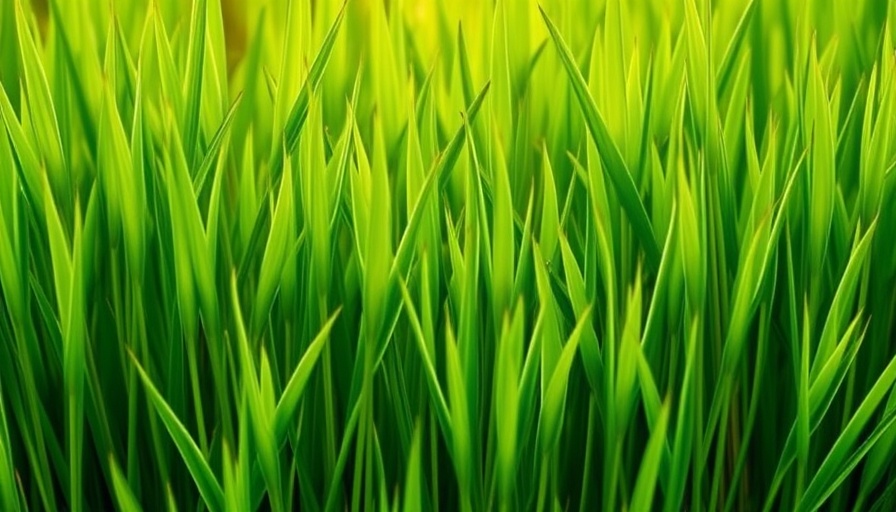
Unlocking the Healing Potential of Barley Grass Juice
Barley grass juice, extracted from the young leaves of Hordeum vulgare, has recently gained notoriety for its strong anti-inflammatory properties. While it might seem like just another health trend on the market, scientific research backs its benefits, making it a powerful ally in the fight against inflammation. Studies indicate that it can improve overall health, particularly for women who often juggle multiple responsibilities and may thus benefit from additional support for maintaining wellness.
How Barley Grass Juice Combats Inflammation
The cellular healing potential of barley grass lies in its unique composition. A key study published in Pharmaceutical Biology in 2013 tested a methanol extract from barley plants exposed to lipopolysaccharide (LPS), a compound that induces strong inflammatory responses. Here, the extract showed remarkable efficacy, reducing inflammatory markers like nitric oxide and cytokines, crucial drivers behind inflammatory diseases. Moreover, in a controlled experiment with mice, those injected with the barley grass extract demonstrated an astounding survival rate increase from 20% to 80% under intense inflammatory conditions.
Scientific Studies Illustrating Barley’s Efficacy
Delving deeper, one particularly interesting aspect of barley grass research is its antioxidant capabilities. These antioxidants work at a foundational level, cleaning up cellular damage that could lead to chronic diseases or premature aging. In situations like chronic inflammation—often a silent issue that affects millions, especially women—this juice not only alleviates symptoms but also promotes long-term cellular health.
The Nutritional Breakdown: What Makes Barley Grass Special?
Looking past its energetic green hue, barley grass is packed with nutrients like vitamins A, C, E, and K, alongside a plethora of minerals. This nutrient density enhances its appeal, effectively positioning it as a green superfood. It’s not just about alleviating inflammation; it’s about equipping the body with the tools to maintain a healthy lifestyle. For women, particularly those leading busy lives, incorporating barley grass can be a simple yet effective dietary boost.
Potential Future Applications of Barley Grass in Health
As research progresses, the understanding of barley grass’s health benefits expands. Future studies could explore memory enhancement, cardiovascular health, and even cancer-fighting capabilities. Should these avenues yield positive results, barley grass could emerge not just as a health supplement, but as a staple in preventive medicine—a remarkable transition from a trending supplement to a globally recognized health essential.
Accessibility: Integrating Barley Grass into Your Diet
For women looking to incorporate barley grass, it's easier than ever. Available in juice, powder, or pill form, it can be added to smoothies, soups, or even baked goods, making it versatile for all culinary preferences. However, it’s vital to choose high-quality sources to reap the full nutritional benefits. Taking the extra step to investigate the origins and processing methods of barley grass can enhance its efficacy and ensure safety.
Final Thoughts on Barley Grass and Your Health Journey
Ultimately, understanding the profound benefits of barley grass can redefine your health journey. It’s not merely about transient health fads but fostering lasting wellness through informed dietary choices. As you consider adding barley grass to your repertoire, remember the studies that support its efficacy in fighting inflammation and enhancing health. By being proactive and informed, you’re paving the way for a healthier, more resilient future.
Don't miss out on the chance to improve your health with barley grass. Grab the opportunity to save $25 off your next purchase with the coupon code HEALTH25, valid until August 3rd. It's time to make a difference in your health journey!
 Add Row
Add Row  Add
Add 




Write A Comment